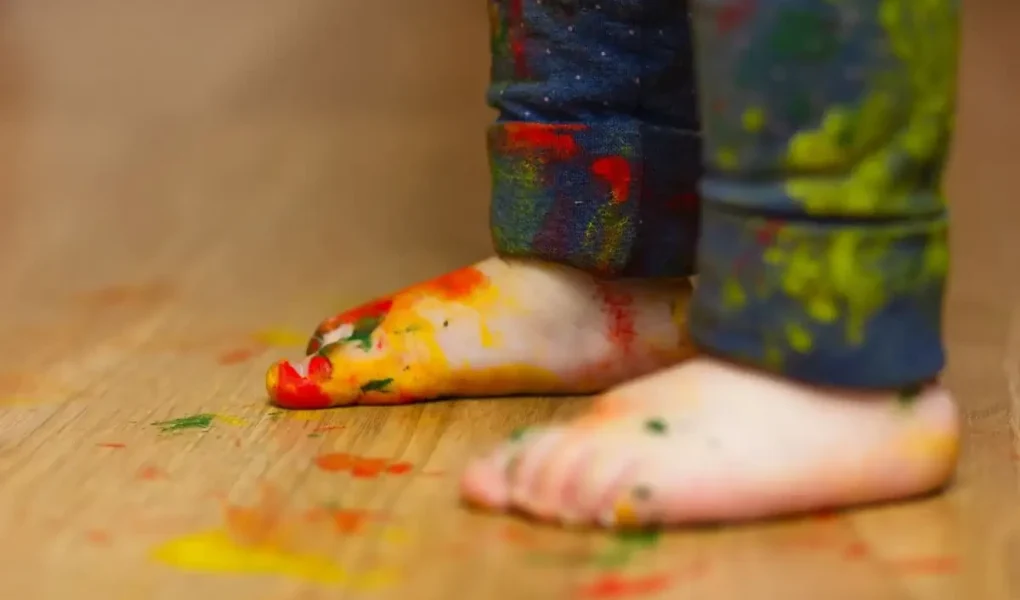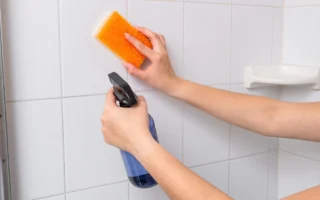Paint spills on wood floors can be a frustrating challenge. They not only detract from the beauty of your flooring but also require immediate attention to prevent lasting damage. Vinegar as a DIY solution offers an accessible and eco-friendly method for addressing this issue. Many homeowners turn to vinegar because it’s affordable, non-toxic, and often effective. Its acidic nature helps break down paint without harsh chemicals that could harm the wood beneath.
Proper technique is crucial for success when using vinegar. Following a step-by-step guide ensures you minimize potential risks while removing unwanted paint stains. While vinegar may work in many cases, other methods are available if the situation calls for something stronger or more specialized.
The potential damage of paint on wood floors

Paint spills on wood floors can lead to numerous problems. At first glance, they may seem like a simple eyesore. Over time, however, the paint can seep into the wood grain. If not addressed promptly, it can cause discoloration or staining, changing the floor’s natural hue. This could ruin your carefully curated aesthetic.
Certain types of paint contain harsh chemicals that might react with the finish on your hardwood floors. This reaction can weaken and damage the protective layer, leading to scratches and dullness. In cases where paint is left for too long, removal becomes increasingly difficult. Scraping or sanding might be necessary methods that risk damaging the wood if not done correctly.
Why vinegar is a popular DIY solution for removing paint
Vinegar has long been a go-to solution for many household tasks, and paint removal is no exception. Its natural acidity makes it effective in breaking down stubborn paint residues without the harsh chemicals in commercial removers. Homeowners appreciate that vinegar is safe to use around pets and children. It’s also readily available and inexpensive, making it an accessible option for those on a budget or those who prefer DIY methods.
Another appealing aspect of vinegar is its environmental friendliness. Vinegar offers a more eco-conscious approach to tackling messes than petroleum-based solvents, which can release harmful fumes. People love how versatile vinegar is; it can be used for removing paint and cleaning various surfaces throughout the home. This multi-functional nature adds value to any cleaning arsenal while promoting sustainable practices at home.
How vinegar works to remove paint from wood floors

Vinegar is a powerhouse when it comes to tackling paint on wood floors. Its acetic acid content works wonders at softening paint, making the removal process much easier. Vinegar encounters paint, penetrating the layer and breaking down its adhesion. This chemical reaction weakens the bond between the paint and the wood surface, allowing you to scrape or wipe away remnants with minimal effort.
Using vinegar also has an added bonus: it’s non-toxic and safe for indoor use. Unlike harsh chemical solvents that can emit strong fumes, vinegar offers a more pleasant alternative for DIY enthusiasts. For best results, warm up your vinegar before application. The heat enhances its effectiveness by further loosening stubborn paint spots. Just dab it onto the affected area and let it work its magic; soon enough, you’ll be one step closer to restoring your wood floors to their former glory.
Step-by-step guide for using vinegar to remove paint
- Start by gathering your materials: white vinegar, a spray bottle, a soft cloth or sponge, and a plastic scraper.
- Pour some vinegar into the spray bottle. Spray it generously over the paint spots on your wood floor. Let it sit for about 10 to 15 minutes; this allows the vinegar to penetrate and soften the paint.
- Next, take your cloth or sponge and gently scrub the area in circular motions. You should see the paint beginning to lift away.
- For any stubborn patches, use a plastic scraper with care. Avoid damaging your wood surface; this is crucial.
- After removing the paint, wipe down the area with clean water to remove any residue from the vinegar. Dry thoroughly with another clean cloth to prevent moisture damage. Repeat if necessary until you achieve satisfactory results.
Other effective methods for removing paint from wood floors
If vinegar isn’t your go-to solution, other effective methods should be considered. One popular option is using a commercial paint stripper specifically designed for wood surfaces. These products often contain strong solvents that can cut through even the toughest paint. Another technique uses heat. A heat gun can soften the paint, making it easier to scrape away with a putty knife.
For those who prefer a gentler approach, try rubbing alcohol or acetone on smaller dried paint spots. Apply it with a soft cloth and let it sit for a minute before scraping. Sanding is always an option for stubborn areas but requires care to avoid damaging the floor’s finish.
Tips for preventing future paint spills on wood floors
Preventing paint spills on wood floors starts with preparation. Lay down drop cloths or old sheets to catch any drips or splatters. This simple step can save you a lot of cleanup work later.
When painting, use painter’s tape along edges and corners. It creates a barrier that helps contain the paint within designated areas.
Use a tray for your paint roller or brush and avoid overloading it. A small amount goes a long way, reducing the risk of accidental spills.
If you’re working in an area prone to traffic, set up barriers or create a designated “wet zone.” Keeping pets and family members away minimizes the chances of mishaps.
Always keep cleaning supplies nearby. Having rags soaked in vinegar or water can help tackle minor accidents before they dry out and become harder to remove.




